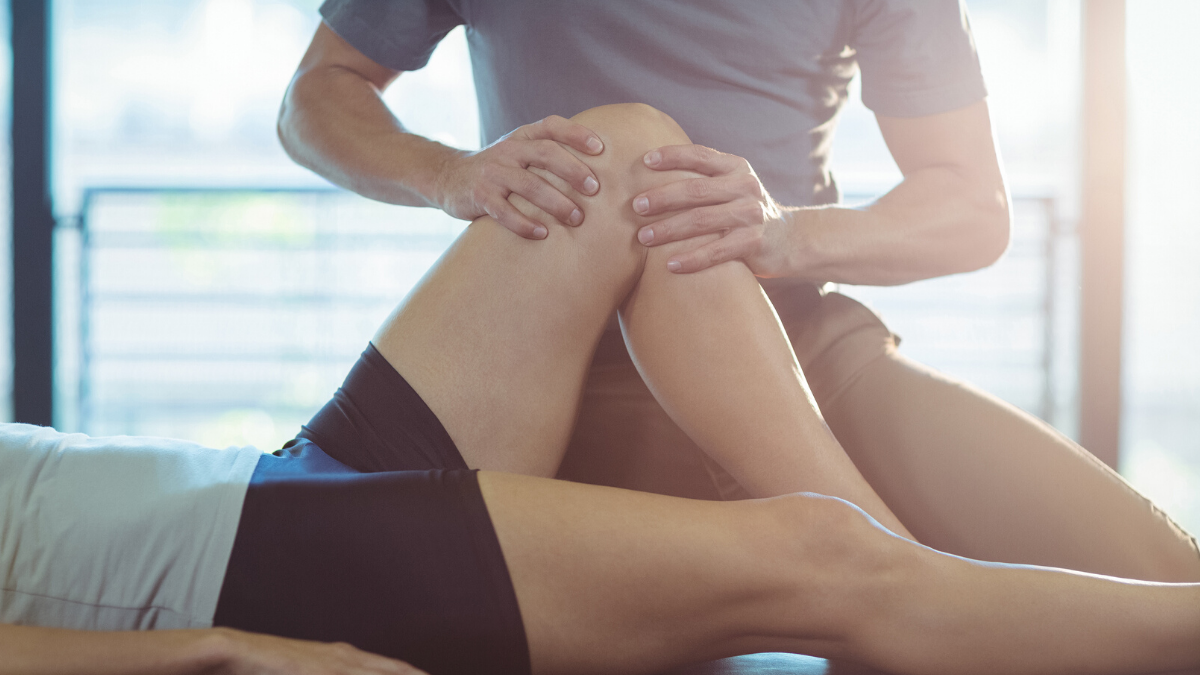Massage for Rehabilitation
Learn how massage therapy can help patients recover from major surgeries, joint replacements, and sports injuries.

With more than 40 million surgeries performed in the United States every year, there’s a good chance some of your massage therapy clients will be dealing with post-surgical pain, scarring, and other common physical and emotional issues.
Postoperative pain isn’t always short-lived — it can complicate and delay a patient’s return to daily activities and lengthen hospital stays and costs. Research shows persistent or chronic post-surgical pain lasting two to three months is responsible for nearly one in four cases of chronic pain. This type of pain places significant psychosocial and economic burdens on patients and represents a major public health problem.
Surgery-related pain is also closely associated with various functional outcomes, including quality of life and sleep disturbances. And, patients who are about to undergo surgery commonly experience fear and anxiety, which complicate pre- and post-surgical pain management and increases the likelihood of developing chronic post-surgery pain.
Massage Therapy Benefits for Rehabilitation
Studies indicate that massage therapy has a variety of benefits for helping people recover from surgeries, including:
- Decreasing postoperative pain and intensity
- Reducing postoperative stress and anxiety
- Decreasing doses of analgesics
- Reducing inflammation and scar tissue
- Helping regain full range of motion without discomfort
- Aiding in the re-alignment of muscles and joints
Common Types of Surgery and How Massage Therapy Can Help with Rehabilitation
Here are some of the most common types of surgeries massage therapists may encounter in their practice. Explore what’s involved in these procedures and how massage therapy can help these post-surgical patients.
Abdominal Surgery
What's Involved: Abdominal surgeries take place in the area between the first rib and the pelvic floor and can be performed on a variety of abdominal organs, such as the reproductive organs, stomach, gallbladder, intestine, appendix, liver, spleen or esophagus. Surgery may be warranted for many reasons, including obstruction, infection, inflammatory bowel disease or tumors. Larger incisions are generally used in open abdominal surgery, while smaller incisions are used during laparoscopic surgery.
Most Common Post-surgery Complaints/Complications
- More than 9 in 10 people who undergo abdominal surgery will develop some type of scarring or adhesions
- Muscle inhibition and adhesions can become tighter even years after surgery
- Back pain often results because patients “compensate” for abdominal muscle inhibition and scarring by changing how they move or bend
How Massage Therapy Can Help
Studies indicate that massage helped patients with chronic low back pain, suggesting massage therapy acted similarly to anti-inflammatory pain drugs.
Massage therapy also helps with changing alignment due to complications post-surgery—the alignment of the body itself or any joint. It can help reactivate muscles that may not be working as they should be. In addition, massage can minimize scars in abdominal surgery patients, stretching out the tissue to diminish the scar.
Hip Replacement Surgery
What's Involved: Known medically as hip arthroplasty, this procedure replaces a worn out or damaged hip with an artificial joint because of problems such as a hip fracture or arthritis. Traditional hip replacement involves a several-inch incision over the hip joint, while minimally invasive versions use one or two smaller incisions. Surgical approaches include an incision from the front—called anterior hip replacement—which may result in less trauma to muscles; a posterior approach is more traditional and involves a back or side incision.
Most Common Post-surgery Complaints/Complications
- Misalignment in muscles and joints that can produce prolonged pain
- Scar tissue resulting in reduced range of motion
- Deep vein thromboembolism is a potential major complication in hip replacement patients
How Massage Therapy Can Help
Studies indicate that manual calf massage can contribute to a lower incidence of deep vein thromboembolism in hip replacement patients. Massage therapy also helps patients with troublesome scar tissue. A massage therapist can address those muscles that have become overcontracted— like the hamstrings, quads and larger glute muscles, which may be hypertoned to help protect the surgical area from injury.
Cardiac/Cardiothoracic Surgery
What's Involved: Designed to treat heart or lung disease, cardiothoracic surgery may involve splitting the chest open—as in open-heart surgery—or more minimally invasive techniques.
Most Common Post-surgery Complaints/Complications
- Discomfort due to impaired movement in the nearby shoulders, back and neck
- Patients may feel short of breath or afraid to breathe— it can feel tight or uncomfortable as the area heals
- Many people experience right shoulder pain post-surgery (even though the heart is on the left side) due to compensation in the pectoral muscles and decreased strength overall in the shoulders
How Massage Therapy Can Help
A research review of 12 studies published in the journal Heart & Lung looking at thoracic surgery, found that patients receiving massage therapy in combination with pain-relieving medications reported less pain than those who received “sham” massage or those receiving only pain medication.
Tips for Working with Post-Surgery Patients
- Palpitation around the surgical site can determine if scar tissue is forming near the area or distantly as well.
- Before working with a client who’s undergone surgery of any type, a massage therapist should seek medical clearance if they’re less than six weeks post-procedure.
- If there’s an infection or redness present, or a wound is not healing, do not work directly on that area.
- Any work that a massage therapist can do help manage a patient’s stress may improve outcomes. Research indicates that high-stress levels can reduce wound-healing and dampen immune function.
Related Resources
Massage for Post-Operative Pain
$37.00 members / $62.00 nonmembers 2.5 CE credits
In this course, explore specific surgeries, common types of post-operative pain, and massage contradictions. Find out how massage can help patients better manage this type of pain.
MTJ Article: Helping Patients After Surgery
In this Massage Therapy Journal article explore how a growing body of research supports massage therapy for post-surgical patients.